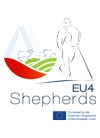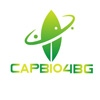Fundamentals of Hydrology
|
Course title: |
Fundamentals of Hydrology |
|
|
Course code: |
LGFOH |
|
|
ECTS: |
5 |
|
|
In-class hours |
Lectures: |
30 |
|
Laboratory work/Tutorials: |
30 |
|
|
Self-preparation hours |
Practical training: |
90 |
|
Other: |
5 |
|
|
Total hours: |
125 |
|
|
Language: |
English |
|
|
Study cycle: |
Bachelor, Master, PhD |
|
|
Semester: |
Winter & Summer |
|
|
Faculty: |
Faculty of Horticulture and Viticulture |
|
|
Name of the lecturer(s): |
Assoc. Prof. Eng. Rositsa Meranzova, PhD |
|
|
Mode of delivery: |
Face-to-face, distance learning |
|
|
Prerequisites: |
Knowledge on Mathematics, Soil Science and Meteorology basics. |
|
|
Learning outcomes of the course unit: |
This is a general course for agricultural, environmental and engineering students. It aims to give an essentially practical approach to the various aspects of the subject and emphasizes the application of hydrological knowledge to solving engineering and agronomic problems. Students will learn about the basic concepts related to the collection of data and analysis of the hydrological factors for flood prevention, conservation and utilization of water resources. The mathematical approach is simple for everyone with basic knowledge of Mathematics and Physics. The course is a prerequisite for and aid of further learning in disciplines as Irrigation, Drainage and River Training, Agricultural Water Management, and Hydraulic Structures. |
|
|
Course contents: |
Lectures: 1. Introduction. Water cycle. Water distribution in space and time. Water balance. 2. Evaporation and precipitation. Definitions. Evaporation from water and soil surfaces. Precipitation types. Precipitation data. Areal rainfall. Arithmetic mean. Isohyetal method. Thiessen polygon method. 3. River hydrography. River network, river system and hydrographic network. River elements. Catchment. River valley and river bed. 4. River hydrometrics. Hydrometric network and surveys. Water levels and measuring devices. Water-level data processing. Measuring flow depths and flow velocities. Volumetric flow rate estimation. The “water level – flow rate” relationship. 5. Hydrological statistics. Basic terms. Probability. Frequency distribution. Cumulative distribution curve. Linear regression – graphical and analytical analysis. 6. Ground waters – classification and regime. Basic terms. Water table. Unconfined and confined aquifers. Artesian aquifer/well. Piezometric surface. Groundwater recharge. 7. Monitoring of groundwater water table. Water wells construction. Mapping of groundwater levels. Flow velocity estimation. 8. River runoff. Phases, factors and formation processes. Net rainfall. Hydrograph. Flow rate evaluation. 9. Water balance of a catchment. Evaluation of maximum flood discharge (peak flood) in a river – statistical and empirical methods. Characterization and evaluation of the minimum flow rate. 10. Sediments. Formation, types and characteristics. Sediment movement and deposition. Measuring and evaluation of sediments in a river. 11. Hydrological forecasts. Basics and significance. Classification. Hydrometrical forecasts. Short-term and long-term forecasts. River flow routing.
Exercises: 1. Rainfall data processing. 2. Flow rate and velocity estimation in a river profile. 3. Evaluation of rainfall statistics.. 4. Runoff estimation with sufficient and insufficient data. 5. Evaluation of maximum flood discharge (peak flood) in a river – statistical and empirical methods. |
|
|
Recommended or required reading: |
1. Shaw, E.M. (1994) Hydrology in Practice, Third edition. Taylor & Francis, London. 2. Han, D. (2010) Concise Hydrology. Ventus Publishing ApS. 3. Valipour. M. (2014) Handbook of Hydrologic Engineering Problems. OMICS Group. 4. NEH-630. Hydrology. National Engineering Handbook, USDA-NRCS. https://www.nrcs.usda.gov/wps/portal/nrcs/detailfull/national/water/manage/hydrology/?cid=stelprdb1043063 |
|
|
Planned learning activities and teaching methods: |
Lectures, multimedia presentation, tutorials, discussions, exercises. |
|
|
Assessment methods and criteria: |
Exercises evaluation, written exam, interview |
|
 - Събития по случай 80-я юбилей на АУ
- Събития по случай 80-я юбилей на АУ











